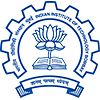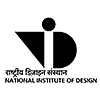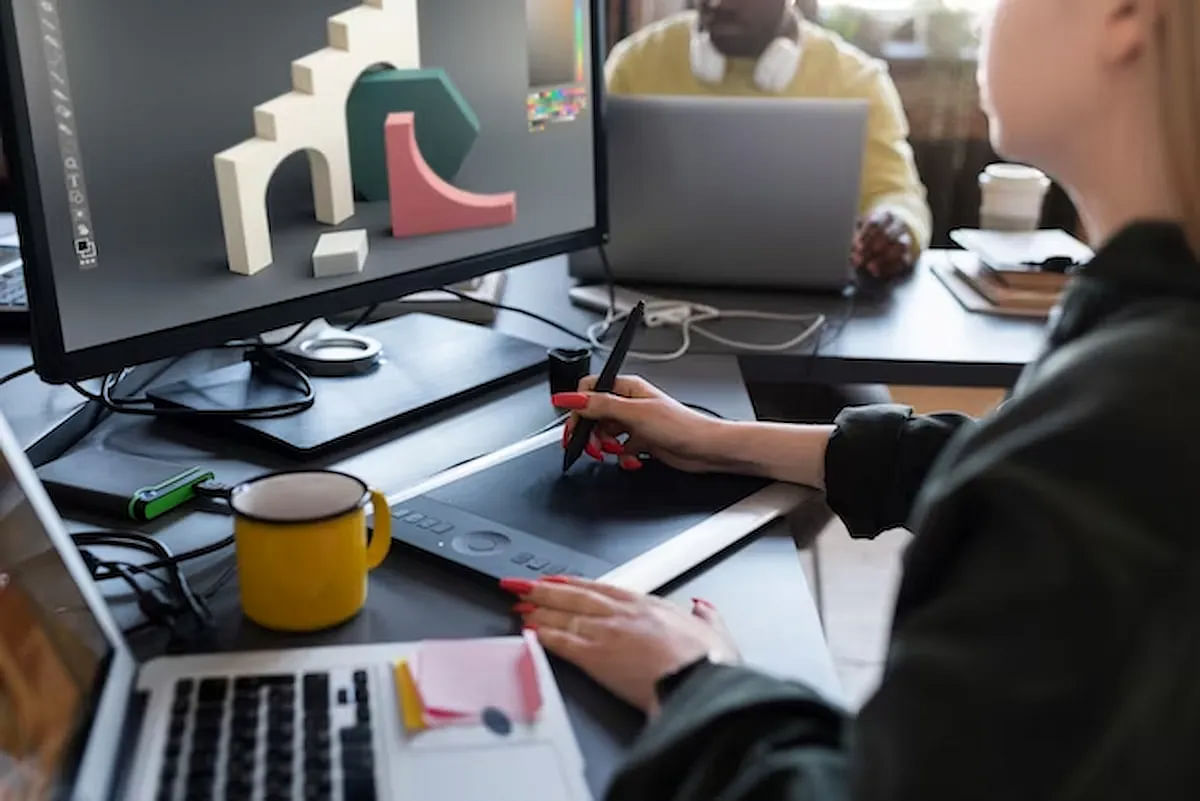Is being a Graphic Designer your dream career option? Check out the complete step by step process on how to become a Graphic Designer, Eligibility, Exams, Skills Required and Salary in 2023.
A graphic designer is a professional who communicates ideas by creating visuals for websites, print ads, online campaigns, and more. With the advancement of e-commerce & social media, the demand for graphic designers in India is on the rise. India’s graphic design market is projected to grow at a CAGR of 7.3% in 2023. On average, the graphic designer's salary in India is INR 3,05,223 per annum.
Candidates who wish to pursue a graphic design career can start by pursuing formal education like a bachelor’s or diploma program. Most importantly, they should gain the necessary skills and knowledge of graphic designing tools. Moving ahead, candidates must focus on gaining industry experience through internships and creating a graphic design portfolio. Finally, they can start exploring suitable job opportunities in this field.
Table of Contents
- How to Become a Graphic Designer in India?
- Who is a Graphic Designer?
- How to Become a Freelance Graphic Designer?
- What does a Graphic Designer do?
- Types of Graphic Designers
- What is the Salary of a Graphic Designer?
- Future Scope of Graphic Designing in India
- Pros and Cons of Being a Graphic Designer
How to Become a Graphic Designer in India
With relevant skills, qualifications, practical experience, and a strong portfolio, aspirants can build a career in graphic design. Here are the step-wise instructions below that must be followed by aspirants to become a fashion designer.
- Step 1: Complete 10+2
- Step 2: Clear Entrance Exams
- Step 3: Pursue Graphic Design Courses
- Step 4: Acquire Skills & Knowledge of Tools
- Step 5: Work on Personal Projects
- Step 6: Look for Internships
- Step 7: Build a Portfolio
- Step 8: Apply for Jobs
Step 1: Complete 10+2
As the primary step, aspirants should pass 10+2 with a minimum of 50% marks from a recognised board. They can opt for any stream at the school level. It would be beneficial to take part in creative activities during school.
Step 2: Clear Entrance Exams
Now a graphic design entrance exam must be taken by the candidate to secure admission into a bachelor’s graphic design program. The list of top graphic design entrance exams is given below for candidates’ reference:
- AIEED
- SEED
- UCEED
- NID DAT
- IICD Exam
- Pearl Academy Entrance Exam
Step 3: Pursue Graphic Design Courses
Aspirants must enrol for an undergraduate course in graphic design after passing the entrance exams. Given below are the top graphic designing courses after 12th. The graphic design course duration of a bachelor’s degree program is 3-4 years.
|
Course |
Duration |
Average Annual Fee (INR) |
|
B.A. in Graphic Design |
4 years |
INR 30,000-3,00,000 |
|
B.Des |
4 years |
INR 3,00,000-10,00,000 |
|
B.Sc in Graphic Design |
3 years |
INR 2,00,000-5,00,000 |
After completion of a bachelor’s program, candidates can pursue a master’s degree in graphic design or start working in entry-level roles. Here we have given the list of the best master’s graphic design courses:
|
Course |
Duration |
Average Annual Fee (INR) |
|
M.Des |
2 years |
INR 1,00,000-3,00,000 |
|
M.Sc in Visual Communication |
2 years |
INR 1,00,00-5,00,000 |
|
M.A in Graphic Design |
2 years |
INR 1,00,000-3,50,000 |
Note: Aspiring graphic designers can also begin pursuing graphic design courses after 10th. These are certification programs through which they can learn graphic design principles and gain essential skills.
Step 4: Acquire Skills & Knowledge of Tools
Once candidates have earned the requisite graphic designer qualifications, it is time for them to gain graphic design skills. The following are the major skills that every aspiring candidate must possess:
- Creativity
- Knowledge of Software
- Knowledge of Programming Languages
- Time Management Skills
- Visualisation
- Good Communication Skills
- Team Management Skills
- Attention to Detail
- Visual Design Skills
- Interpersonal skills
- Knowledge of Typography
- Knowledge of Colour theory
- Ability to work under tight deadlines
Besides acquiring the graphic designer key skills, it is vital for aspirants to have an understanding of various tools. Using these tools, graphic designers can create high-quality designs and save a lot of their time and resources. The following are the best tools for graphic designers:
- Adobe Creative Cloud
- Adobe Photoshop
- Adobe Illustrator
- InDesign
- Canva
- Affinity Designer
- CorelDRAW
Step 5: Work on Personal Projects
The best way aspirants can hone their graphic design skills is by working on personal design projects. They can work on creating mock ads or logos for existing companies. Alternatively, they can volunteer with local brands or non-profit organisations and offer design services. Not only will candidates be able to practice well, but they will also get real-world experience.
Step 6: Look for Internships
Pursuing an internship is an excellent way to get hands-on experience in the industry. Candidates must look for graphic design internships online on various platforms like Internshala, Twenty19, etc. An internship experience shall add a lot of value to the candidate’s resume and portfolio.
Step 7: Build a Portfolio
The next step is to create an impressive graphic design portfolio. The portfolio will reflect the candidate’s skills, knowledge, and experience. All the projects that the candidate has worked on in college or internships must be added to the portfolio. Also, try to include only quality work rather than focusing on quantity.
Step 8: Apply for Jobs
Candidates can finally begin their search for job opportunities. They should register on various job search sites and apply for graphic design jobs. Moreover, they must make sure that their resume contains all the relevant information, including skills, qualifications, & work experience.
Also, Check: How to Become an Animator?
Who is a Graphic Designer?
A graphic designer is someone who creates visual content manually or using specialised software and computer programs. They design logos, website banners, posters, hoardings, and layouts, along with creating visual effects and video transitions. Graphic designers use both text and images to communicate their ideas.
How to Become a Freelance Graphic Designer?
Candidates can also choose to offer freelance services as a graphic designer. With relevant skills, design knowledge, and a solid portfolio, they can start working as a freelancer in graphic design. However, freelancing requires candidates to find their clients, market themselves, and build their network. Here are some steps to follow in order to become a freelance graphic designer:
- Gain graphic design skills: First, aspirants should take up a course to understand the principles of graphic design and work on their skills. Visual design skills, colour theory, typography, etc., are some of the required skills.
- Learn the Right Tools: As a freelance graphic designer, a candidate must be adept at using various software and computer programs. These include Adobe Photoshop, Adobe Illustrator, InDesign, Affinity Designer, CorelDRAW, etc.
- Portfolio Creation: Candidates must now pursue internships and other projects to develop their portfolio. Their portfolio will highlight their skills & abilities as a graphic designer.
- Deciding on the price: At this point, aspirants must decide how much they want to charge their clients. They can connect with other freelancers in this field and check their experience, services, and rates.
- Making web presence: Now, it is the time for candidates to market themselves. A strong online presence is required so that potential clients can reach out easily.
- Find worthy clients: Candidates can search for clients on freelance websites or look into their personal networks. They can contact their peers or relatives to find out a prospective client.
What does a Graphic Designer do?
Aspirants can better understand the job profile by reviewing the graphic designer roles and responsibilities below:
- Creating graphics, logos, layouts, and illustrations for websites, print ads, and campaigns
- Brainstorming ideas and researching information for creating unique designs
- Collaborating with copywriters, editors, and other team members for inputs
- Discussing the requirements and budgets with clients and organisations
- Selecting the appropriate colour schemes, fonts, and other design elements
- Keeping up to date with the latest technologies and software used in visual design
Types of Graphic Designers
Now that students have understood the graphic designer job description let us move ahead and discuss the various types of graphic designers.
1. Art Directors
They are involved in developing visual images for newspapers, television productions, magazines, etc. Various advertising and marketing agencies recruit art directors.
2. In-House Graphic Designers
A graphic designer is hired by established companies and brands. They have a diverse set of responsibilities, from designing new campaigns to preparing annual reports.
3. Web Designers
A web designer is responsible for creating pictures and text for web pages. They build the layout of the website along with developing other website designs.
4. Industrial Designers
They generate ideas and work on visuals for manufactured products, including home appliances, cars, toys, etc.
5. Product Designers
Product designers work on designing products from scratch or enhancing the functionality or appearance of an existing product.
6. Mobile Designers
This type of graphic designer focuses on creating interactive and compelling visuals for mobile devices.
7. Multimedia Artists and Animators
Their job is to work on animation and visual effects for various forms of media, including television, video games, and movies.
Qualifications to Become a Graphic Designer
Candidates can learn all about the graphic designer eligibility criteria through the points mentioned below.
- An aspirant should have passed 10+2 from any stream to opt for a graphic designing course at the UG level.
- Many colleges accept students for admission to graphic design courses through valid entrance exam scores.
- To pursue a PG course in graphic design, candidates must hold a diploma or bachelor degree’s degree in graphic design.
- Knowledge of graphic designing tools is a must to get jobs in this field. Moreover, candidates who possess relevant certifications and experience get preference.
Top 10 Graphic Design Colleges in India
It is important for aspirants to pursue a graphic design course from a good college. Here we have provided the list of the top 10 private and government colleges that offer graphic design courses in India. The list has been prepared based on IIRF Design Ranking 2023.
Top Private Colleges for Graphic Designing Courses
- UID Ahmedabad
- Amity School of Fashion Technology, Noida
- Woxsen School of Arts and Design, Hyderabad
- Pearl Academy, Mumbai
- Pearl Academy, Delhi
- MAEER’S MIT, Pune
- Pearl Academy, Bengaluru
- Apeejay Institute of Design, Delhi
- Whistling Woods International, Mumbai
- World University of Design, Delhi
Top Government Colleges for Graphic Designing Courses
- NID Ahmedabad
- NID Bengaluru
- IIT Delhi
- IIT Mumbai
- IIT Guwahati
- IIT Kanpur
- IIT Hyderabad
- NID Kurukshetra
- NIFT Delhi
- IIT Jabalpur
What is the Salary of a Graphic Designer?
The average graphic designer salary in India is INR 3,05,223 per year, according to Payscale. Based on the job profile of graphic designers and their experience, the salary figures shall vary. Check out the experience-wise graphic designer salary details through the table below.
|
Level |
Experience |
Average Annual Salary (INR) |
|
Entry Level Graphic Designer |
Less than 1 year |
INR 2,36,569 |
|
Early Career Graphic Designer |
1-4 years |
INR 2,93,835 |
|
Mid-Career Graphic Designer |
5-9 years |
INR 4,04.303 |
|
Experienced Graphic Designer |
10-19 years |
INR 4,94,405 |
Depending on the type of job role, a graphic designer can earn the below-mentioned salaries on an annual basis.
|
Web Designer |
INR 3,16,300 |
|
Visual Designer |
INR 5,86,768 |
|
Art Director |
INR 6,57,770 |
|
Motion Graphic Designer |
INR 3,65,805 |
|
User Interface Designer |
INR 3,93,486 |
Top Companies Recruiting Graphic Designers in India
There are many leading companies in India that offer graphic design jobs to candidates who have the required skills and knowledge. Candidates can check out the list of companies below:
- Cogwheel Studios
- Wipro Technologies
- Fisheye, New Delhi
- Design Factory India
- Moonraft Innovation Labs Pvt. Ltd
- SAP Labs India Pvt. Ltd
- General Motors Design
- Edge Studio, New Delhi
- Mango blossom Design, Mumbai
- Think Design, Hyderabad
- Eastern Silk Industries Ltd
Major Employment Sectors for a Graphic Designer
There is a wide scope of graphic designing as various sectors in India provide graphic design job opportunities. Mentioned below are some of the top sectors where graphic designers can work:
- Corporate businesses
- Television industry
- MNCs
- Publishing houses
- Multimedia companies
- Commercial packaging
- Training Institutions
- TV and film companies
- Advertisement Agencies
- Web Designing
- Marketing firms
- Printing and Publishing
- Design studios
Future Scope of Graphic Designing in India
With the increasing use of digital media and social media marketing, there has been rapid growth in the graphic design field. Moreover, in the coming years, this industry will continue to flourish. Companies have become more aware of the significance of visual communication and are investing increasingly in professional graphic design services.
The design industry is also witnessing the increasing use of artificial intelligence. However, this will not affect the growing demand for graphic designers. Only a human mind possesses creative problem-solving skills and the ability to understand the customer’s requirements.
Pros and Cons of Being a Graphic Designer
A candidate should look into the pros and cons of the graphic design field before starting their career as a graphic designer.
Pros of Becoming a Graphic Designer
- High Demand: There is a huge demand for graphic designers in various sectors, including advertisement agencies, design studios, marketing firms, and more.
- Creative Freedom: This field allows an individual to use their creativity and imagination to the fullest. Thus, it is an excellent field for creative minds.
- Continuous learning: As graphic designers, candidates get to learn new skills every now and then. Therefore, the learning process goes on.
- Salary: A graphic designer can earn an average salary of INR INR 3,05,223 per annum. There is a broad scope in this field, and with experience and knowledge, graphic designers can earn really well.
- Job Security: In the internet era, every company wants to create a good web presence to attract customers. This is where the role of graphic designers comes into the picture. Therefore, if candidates constantly work on improving their skills, there are very less chances of job loss in this field.
Cons of Becoming a Graphic Designer
- Huge competition: There is a lot of competition in this industry. Thus, aspirants must keep learning and upskill themselves.
- Long working hours: A graphic designer needs to work for long hours to meet the client’s expectations. Moreover, they spend most of their time behind a computer.
- Tight deadlines: At times, there are strict deadlines for some projects. This sometimes affects the output level of the graphic designer.














POST YOUR COMMENT